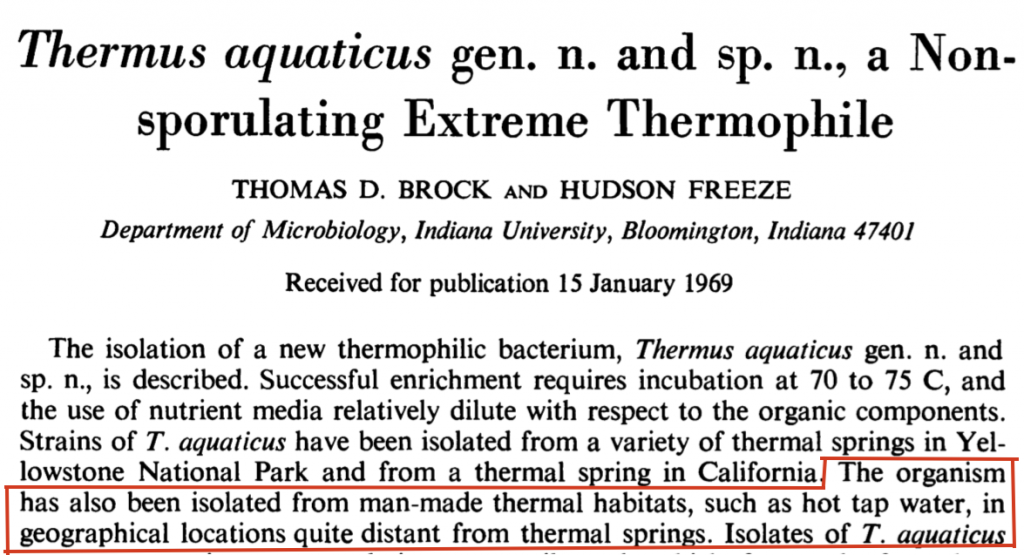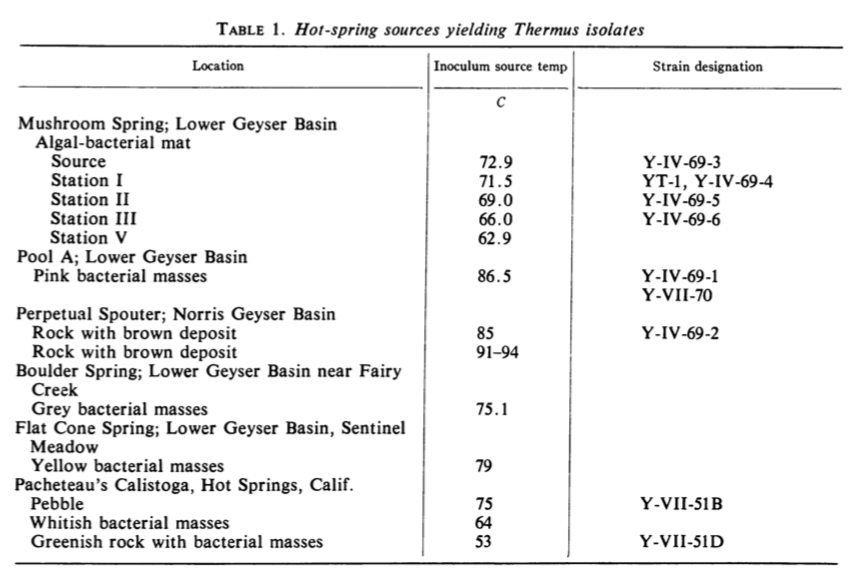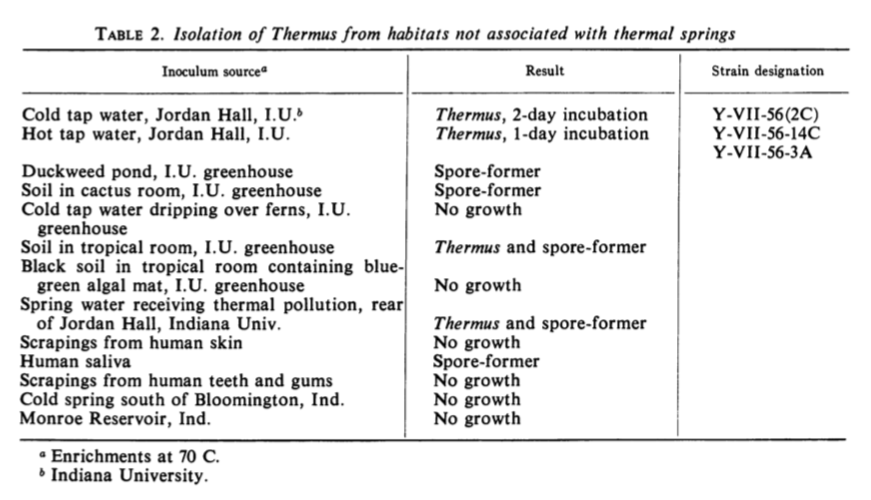So just yesterday I was looking for the original paper describing the isolation of Thermus aquaticus (which is by the way the name I have given my hiking thermos, but that is another story). I wanted to see from which hot springs Brock and Freeze (yup, his real name) had isolated this important (e.g., the source of Taq polymerase for PCR) and interesting (thermophile found in Yellowstone and elsewhere) organism.
So I googled and found the original paper. And thankfully, because it was in a journal published by the American Society for Microbiology, I could get free access to the paper both in Pubmed Central and at the journal cite. I went to Pubmed Central: Thermus aquaticus gen. n. and sp. n., a Nonsporulating Extreme Thermophile by Thomas Brock and Hudson Freeze. 1969. J. Bacteriology 98: 289-297.
I confess I did not realize this paper was from 1969 – I thought this work was more from the late 1970s. Anyway — the paper is there and I was looking through it to see where T. aquaticus was isolated. And the abstract reports
“Strains of T. aquaticus have been isolated from a variety of thermal springs in Yellowstone National Park and from a thermal spring in California”
Well, that was not enough information for me. So I was going to download the whole paper but the next sentence in the abstract caught my eye.
The organism has also been isolated from man-made thermal habitats, such as hot tap water, in geographical locations quite distant from thermal springs
Well, I’ll be darned. It is found in water from the built environment. So cool. Or hot I guess.
I then dug into the full paper. Here is all the detail on isolation sources. Hot spring sources are in a table, which I have seen in various talks over the years.
But what I had not seen was the other sources. There is another table about this
And some text about this too
Isolations from habitats other than hot springs. One experiment was set up to see whether Thermus organisms could be isolated from thermal and nonthermal habitats not associated with hotsprings.All of the inocula were collected from locations around Bloomington, Indiana, which is over 200 miles from the nearest hot spring.This experiment is summarized in Table 2. Several inocula yielded Thermus isolates, but more yielded spore-formers. In another experiment, the enrichments were carried out at 75 instead of 70C. Under these conditions, five samples of hot tap water each yielded Thermus organisms but no spore-formers. Cold tap water and cold spring water yielded no growth at all in enrichments at 75C, but a cold spring receiving thermal pollution yielded Thermus isolates in all cases. Although not exhaustive, these studies permit the conclusion that Thermus is widespread in natural and man-influenced environments, and is associated primarily with thermal habitats. The frequent isolation of Thermus from hot tap water is noteworthy. The temperature of hot water in most buildings as it issues from the tap is 55 to 58C, but the water is probably hotter in the heater. It seems possible that Thermus organisms may grow within the hot-water heater itself, using organic nutrients



Thank you for this blog, Jonathan. Of all the blogs that cross my “desk”, this is the one I look forward to the most, and read in its entirety. Keep up the great work.
What would be different if the same study was conducted today?
One would hope there could be no difference (assuming a static historical line) because the scientific method remains the same. But of course the time line is not static – the ever increasing ability of technology to wring out data does change the potential result. Not qualitatively (the scientific method is static) but quantitatively the data available to Brock and Freeze would certainly form a much larger pool.
The other thing that changes is knowledge: that which was true in 1969 may not necessarily be true in 2017 – which undermines the meaning of the word true – but that is another subject altogether.